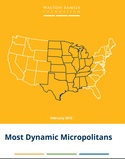“Around the world, the vast majority of people are moving to cities not to inhabit their centres but to suburbanise their peripheries. Thus when the United Nations projects the number of future ‘urban’ residents… these figures largely reflect the unprecedented suburban expansion of global cities.” read more »
Demographics
Why Suburbs Need To Be The Next Frontier For Cities Policy
- Login to post comments
America’s Oligarchs Face Left-Wing, Right-Wing Backlash
When the late Steve Jobs died in 2011, even protesters from the left-wing Occupy Wall Street movement mourned his passing. Today, it is unlikely that the passing of a tech giant would elicit much in the way of sympathy from progressives or, for that matter, almost anyone else. read more »
- Login to post comments
Direction of Dallas and Urban Growth
Should the direction of Dallas urban growth continue to grow north? Does inserting low-income housing in North Dallas create an inclusive urban growth direction for Dallas? Does the direction of Dallas and its current goal of moving low-income wage earners closer to higher wage jobs in North Dallas increase or decrease wealth for low-income families? The SMU/George W. Bush Institute Conference, Policies to Promote Inclusive Urban Growth, was a meaningful conference on the direction of Dallas and cities and gave clues to all these questions. read more »
- Login to post comments
Small-Town America Measures Up to Have Big-Time Potential for Economic Growth
As American as baseball, hot dogs and apple pie, Main Street America - and its small towns - is a central component to understanding the economic forces at work across the United States. Dotting the U.S. map – in the Heartland and beyond – are 531 small towns, better known as micropolitan statistical areas, which comprise of one or more counties with at least one city with more than 10,000 but less than 50,000 in population. read more »
- Login to post comments
America’s Role Model Should Be America
President Trump may take blind patriotism too far, but his often nativist stance seems likely to prevail against Democrats whose policy prescriptions increasingly draw from “models” as China, Scandinavia or Germany. Such infatuations have been commonplace for a century among intellectuals inspired variously by Imperial Germany, fascist Italy, the Soviet Union or mercantilist Japan. read more »
- Login to post comments
Cities Point the Way in Promoting Opportunity and Reducing Poverty
American cities are laboratories of democracy. Their differences in policies and economic patterns shed considerable light on the challenge of promoting upward mobility and alleviating poverty.
As we have studied America’s top 60 metropolitan areas over the last several months, five – Minneapolis-St. Paul, Salt Lake City, Denver, Portland (Oregon), and Omaha – stand out for their success in delivering broad-based prosperity. read more »
- Login to post comments
Twilight of the Oligarchs?
Amazon’s decision to abandon New York City—leaving a $3 billion goodie bag of incentives on the table—represents a break in the progressive alliance between an increasingly radicalized Left and the new technocratic elite. read more »
- Login to post comments
She’s No Alexander Hamilton
The Antiplanner might be behind the times, but has anyone else noticed that it is the Democrats who are playing the role of Alexander Hamilton — the conservative who wanted to centralize government and concentrate power in New York banks — while the Republicans are playing the role of Thomas Jefferson — the civil libertarian who wanted to keep economic and political power decentralized? read more »
- Login to post comments
This Train Won’t Leave the Station
Governor Gavin Newsom has canceled the bulk of the state’s long-proposed high-speed line between Los Angeles and San Francisco, leaving only a tail of the once-grand project—a connection between the Central Valley’s Merced and Bakersfield, not exactly major metropolitan areas. “Let’s be real,” Newsom said in his first State of the State address. “The project, as currently planned, would cost too much and take too long. There’s been too little oversight and not enough transparency.” read more »
- Login to post comments
Pulling the Plug on HS2 (London-Birmingham High Speed Rail)?
High speed rail may be proposed as a climate change panacea here and elsewhere, but the results on the ground are less than promising. California Governor Gavin Newsom announced this week that the California high speed rail project would be scaled back to the route between Bakersfield and Merced, in the San Joaquin Valley (which the state has enough money for). In his “state of the state” speech the Governor said “…let’s be real. The project, as currently planned, would cost too much and take too long. There’s been too little oversight and not enough transparency.” read more »
- Login to post comments





















